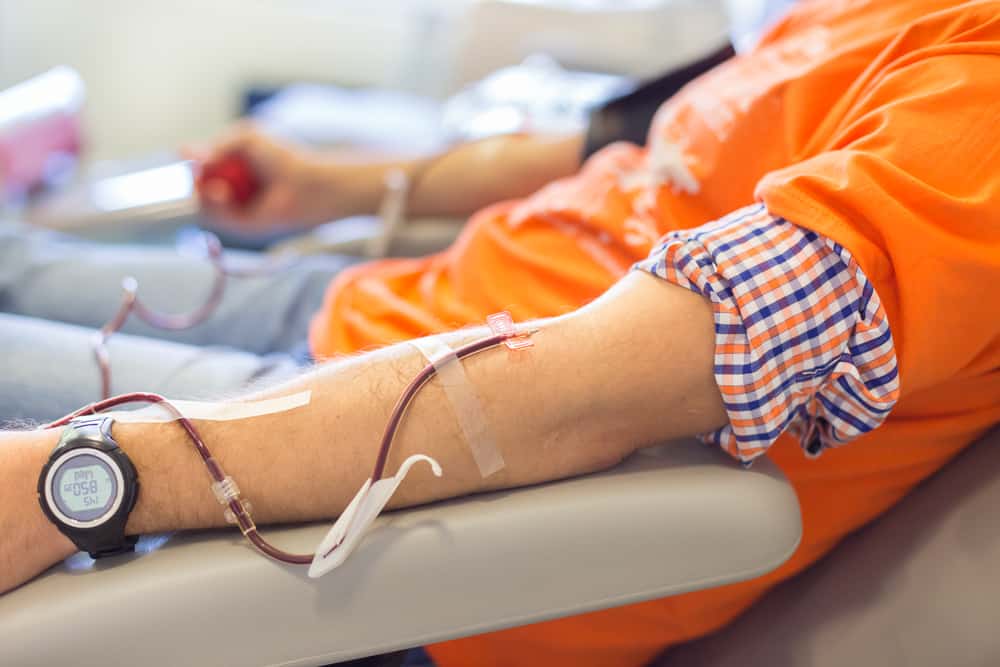Contents:
Medical Video: Diagnostic Cerebral Angiography
Definition
What is carotid angiography?
Carotid angiography is an invasive imaging procedure that involves inserting a catheter into a vein in the arm or leg, and directing it to the carotid artery with the help of a special X-ray machine. Contrasting colors are injected through the catheter so that X-ray images of your carotid arteries (the arteries that supply your brain with oxygen-rich blood) can be taken. This procedure is called the "gold standard" for carotid and cerebral blood vessels.
When do I have to undergo carotid angiography?
Doctors use carotid angiography to:
- evaluate or confirm a narrowing or blockage in your carotid artery
- determine the risk of stroke in the future
- determine the need for further treatment (angioplasty or surgery)
- perform a minimally invasive procedure, carotid stenting, to correct narrowing of the carotid artery
Prevention & warning
What should I know before undergoing carotid angiography?
A magnetic resonance angiogram (MRA) or computed tomography angiogram (CTA) can be an option instead of an angiogram. Each of these tests is not too invasive compared to a standard angiogram.
For people who have problems with kidney, diabetes, or dehydration, steps need to be taken to prevent kidney damage. If you have a history of kidney problems, other blood tests (creatinine, blood urea nitrogen) will be done before carrying out an angiogram to ensure that your kidneys are working properly. In rare cases, surgery is needed to repair a hole in the vein where the catheter is placed.
Process
What should I do before undergoing carotid angiography?
Leave all valuables at home. If you usually wear dentures, glasses or hearing aids, don't use them during the procedure. Your doctor or nurse will tell you specific information about foods and beverages that you can consume before the procedure. Ask your doctor what medication you should use during the examination day. You may be asked to stop using certain drugs such as Coumadin (warfarin, blood thinners). If you have diabetes, ask your doctor how to adjust the medications you use on the day of the exam.
Tell your doctor or nurse if you are allergic to something especially iodine, shellfish, X-ray dyes, latex, or rubber products (such as rubber gloves or balloons).
What is the process of carotid angiography?
You will be asked to wear hospital-specific clothing. The nurse will start by injecting intravenously (IV) into your arm so that medications and fluids can be given during the procedure.
The temperature in the room angiography is usually cold and the light is dim. You will lie on a special table. When you look up, you will see a large camera and several TV monitors.
The nurse or doctor will clean your skin in a place where the container (small plastic tube) will be inserted (arm or groin). Sterile curtains are used to cover the part to prevent infection. It is very important to keep your arms and hands on each side of the body and not touch the curtain. Electrodes (small, flat, sticky) will be placed on your chest. Electrodes are connected to an electrocardiograph (ECG) monitor that monitors your heart's electrical activity.
You may be given a mild anesthetic to calm you down, but you will remain conscious during the procedure. The doctor will use local anesthesia to anesthetize the injected part. A plastic sheath (a short and hollow tube in which a catheter is placed) is inserted into a vein in the arm or groin. A catheter will be inserted through the sheath and into the arteries of your neck (right and left carotid arteries).
When the catheter is placed, the light will be dimmed and a small amount of "contrast material" will be injected through a catheter into your artery. This contrast material will color the vessels that provide circulation to your brain. X-ray cameras will be used to take pictures of the head and neck arteries. You may be asked to hold your breath or turn your head in a different direction when X-rays are taken. When all the images have been taken, the catheter will be lifted and the light will turn on again.
What should I do after undergoing carotid angiography?
The heater and sheath will be lifted. You need to lie down for a few hours. You also need to drink enough fluids to clean the contrast material from your body. You will urinate more often.
If you have questions relating to the process of this test, consult your doctor for a better understanding.
Explanation of Test Results
What do the test results mean?
Your doctor may immediately notify you of the results of your examination after the test is complete. Complete test results are usually ready on the same day.
| Head and neck angiogram | |
| Normal: | Normal blood vessels in terms of size, shape, location and number. |
| The coloring agent flows evenly through the blood vessels. | |
| No visible narrowing, blockage, swelling or other problems in blood vessels. | |
| Abnormal: | Narrowing of the points in the arteries can mean fat deposits, calcium deposits, or clots that reduce blood flow to the arteries. |
| The position of the blood vessels is abnormal, indicating the presence of a tumor or other growth that encourages resistance to it. | |
| Swelling of the blood vessels indicates weakness in the blood vessel walls (aneurysm). | |
| Abnormal blood vessel patterns indicate a tumor. | |
| The dye that comes out of a blood vessel indicates a hole in a blood vessel. | |
| There is an abnormal branching of blood vessels from birth (congenital). | |
Hello Health Group does not provide medical advice, diagnosis or treatment.











